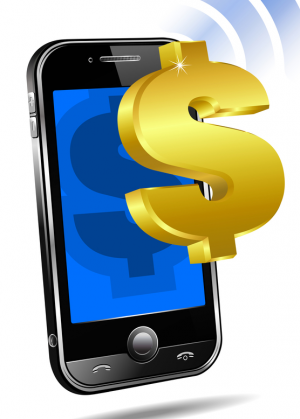Google To Test Mobile Payments In NY And SF
While Apple has reportedly decided to forgo NFC-related hardware/software in iPhone 5 because of a lack of standards, Google is to begin testing NFC-based mobile payments at selected stores in New York and San Francisco according to an article in Bloomberg: The company will pay for installation of thousands of special cash-register systems from VeriFone […]
 While Apple has reportedly decided to forgo NFC-related hardware/software in iPhone 5 because of a lack of standards, Google is to begin testing NFC-based mobile payments at selected stores in New York and San Francisco according to an article in Bloomberg:
While Apple has reportedly decided to forgo NFC-related hardware/software in iPhone 5 because of a lack of standards, Google is to begin testing NFC-based mobile payments at selected stores in New York and San Francisco according to an article in Bloomberg:
The company will pay for installation of thousands of special cash-register systems from VeriFone Systems Inc. (PAY) at merchant locations . . . The registers would accept payments from mobile phones equipped with so-called near-field-communication technology.
Nexus S already NFC-enabled
The Samsung-built Google Nexus S (Gingerbread) is NFC enabled, as will be virtually all Android phones going forward. NFC can be used for many things beyond payments. For example, Google has been testing NFC-enabled window decals in Portland. Tap the decal with the phone and get additional information about the business (including offers).
NFC is thus equally a marketing technology. Android developers will be able to create apps that take advantage of the technology.
Mobile payments is a very hot area with a range of large competitors, including PayPal (eBay), mobile carriers (ISIS) and credit card issuers such as Visa. Amazon will probably eventually enter the space.
Apple recently announced that it had more than 200 million credit-card-enabled iTunes accounts, making the company a potentially formidable competitor in mobile payments as well. In addition there are a number of startups in the segment, including Boku, Zong, Square and Bling Nation.
Mobile payments of any stripe would either rely on the carrier billing infrastructure or a stored credit card account. There will certainly be more than one company that succeeds in mobile payments. But the companies that do will have a powerful direct relationship with consumers. And mobile billing will become part of what might be called “loyalty 2.0.”
Tracking to the point of sale
Google’s Checkout payments platform has had only modest success to date. That lack of penetration has hurt Android developers and Android app monetization. It has forced Google and carriers to try and offer alternative payment options.
A compelling payments experience from Google could change all that. Google would also have access to customer purchase behavior individually and in the aggregate. That would enable all kinds of things including AdWords and display ad tracking to the point of sale and potentially beyond.
(image via Shutterstock.com)
Contributing authors are invited to create content for Search Engine Land and are chosen for their expertise and contribution to the search community. Our contributors work under the oversight of the editorial staff and contributions are checked for quality and relevance to our readers. The opinions they express are their own.
Related stories